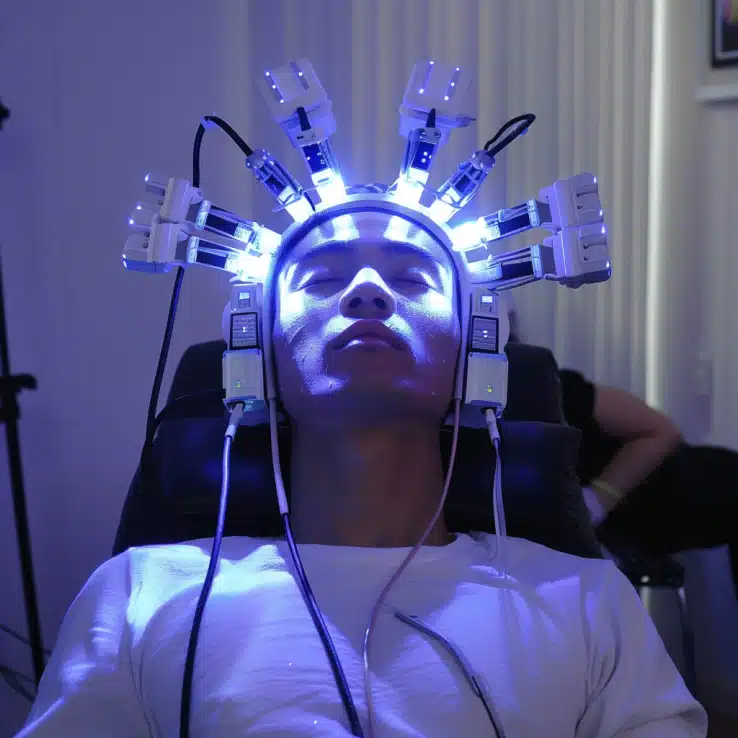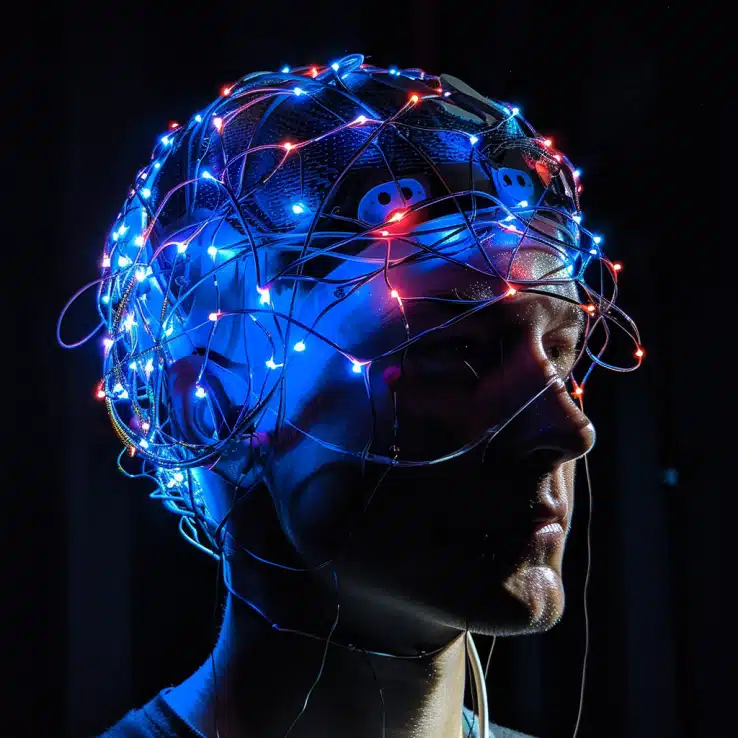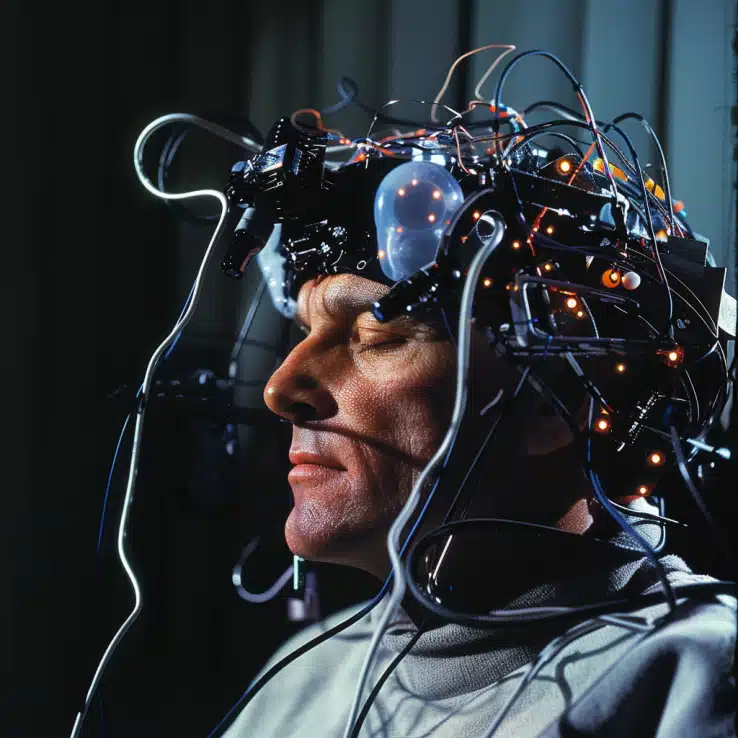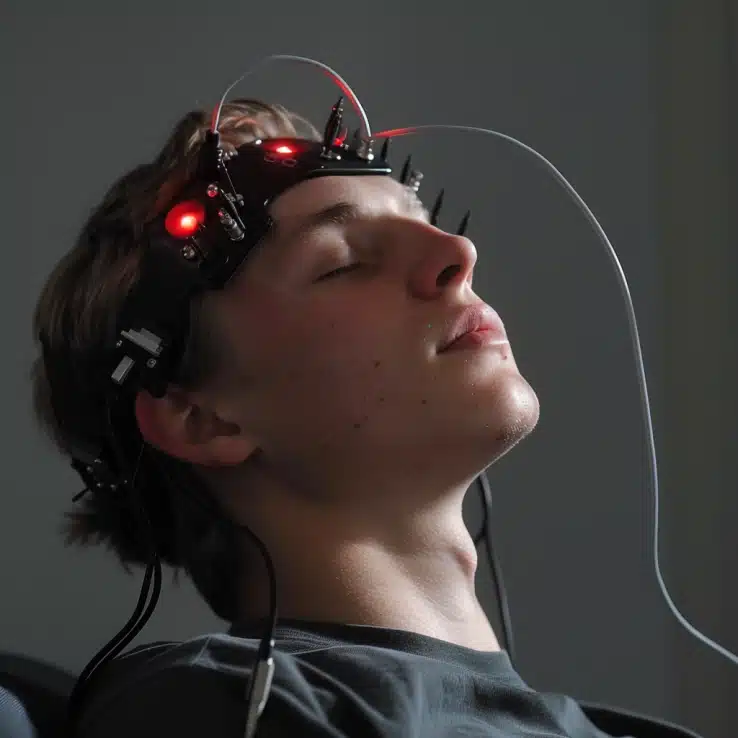Transcranial direct current stimulation (tDCS) targeting the left dorsolateral prefrontal cortex (DLPFC) at 2-mA intensity effectively alleviates depressive symptoms and shows promise in reducing anxiety symptoms across various clinical conditions.
Highlights:
- tDCS targeting the left DLPFC significantly reduces depressive symptoms, highlighting it as a transdiagnostic neural mechanism across diverse clinical conditions.
- The meta-analysis showed that a 2-mA intensity is particularly effective in alleviating depressive symptoms, emphasizing the importance of stimulation intensity.
- Although the effects on anxiety symptoms are less consistent, tDCS over the left DLPFC shows promising results in reducing these symptoms.
- tDCS provides a non-invasive, cost-effective, and safe intervention option, potentially enhancing treatment strategies for depressive and anxiety symptoms in various clinical populations.
Source: Translational Psychiatry (2024)
Major Findings: tDCS of the Left Dorsolateral PFC for Depression & Anxiety (2024)
Zheng et al. evaluated the efficacy of tDCS targeting the left DL-PFC for the treatment of depression and anxiety – below are the main findings.
1. tDCS Effectiveness in Reducing Depressive Symptoms
Transcranial direct current stimulation (tDCS) targeting the left dorsolateral prefrontal cortex (DLPFC) at 2-mA intensity effectively reduces depressive symptoms.
The study found that when tDCS is applied to the left DLPFC, it significantly alleviates depressive symptoms across various clinical conditions, not just in Major Depressive Disorder (MDD).
This region of the brain is crucial for regulating emotions, and stimulating it helps improve mood by enhancing its activity and connectivity with other brain areas involved in emotion regulation.
2. Transdiagnostic Neural Mechanism
The left DLPFC serves as a common neural mechanism underlying depressive symptoms across different clinical conditions.
The findings suggest that abnormalities in the left DLPFC are a core feature of depressive symptoms, regardless of the specific diagnosis.
By targeting this area, tDCS can provide relief from depressive symptoms in a wide range of conditions, from schizophrenia to pain disorders, showing that this brain region plays a pivotal role in depression.
3. Stimulation Intensity Matters
A 2-mA intensity is particularly effective in alleviating depressive symptoms.
The study highlighted that tDCS at a 2-mA intensity is more effective than lower intensities in reducing depressive symptoms.
This suggests that the strength of the electrical current is crucial for achieving the desired therapeutic effects, providing a clear guideline for optimizing tDCS treatment protocols.
4. Promising Effects on Anxiety Symptoms
tDCS shows promising, though less consistent, results in reducing anxiety symptoms.
While the overall effectiveness of tDCS in alleviating anxiety symptoms is not as robust as for depressive symptoms, there are positive indications.
Particularly, stimulation of the left DLPFC and, in some cases, the right DLPFC can help reduce anxiety.
However, the results are more variable, and further research is needed to understand the optimal conditions for treating anxiety with tDCS.
5. tDCS as a Safe & Cost-effective Treatment
tDCS is a non-invasive, cost-effective, and safe treatment option for depressive and anxiety symptoms.
Unlike some other treatments, tDCS has a low risk of side effects and can be administered relatively easily and cheaply.
This makes it an attractive option for patients who do not respond well to traditional treatments, providing a viable alternative or complementary approach to managing depressive and anxiety symptoms.
6. Implications for Personalized Treatment
The study’s findings support the use of tDCS in personalized treatment plans based on individual patient profiles.
By understanding the specific ways tDCS affects the brain, clinicians can tailor treatments to the needs of individual patients.
For instance, patients with more severe or treatment-resistant depression may benefit from higher intensity or more frequent tDCS sessions, while those with milder symptoms might respond well to standard protocols.
This personalized approach can enhance the overall effectiveness and patient outcomes.
(Related: SSRIs & Teen Brains: The Role of Left DLPFC in Depression Recovery)
Review of Evidence: tDCS for Depression & Anxiety (2024)

The study aimed to evaluate the therapeutic efficacy of transcranial direct current stimulation (tDCS) in reducing depressive and anxiety symptoms across various clinical conditions.
It also sought to identify the neural underpinnings of these symptoms to enhance treatment strategies.
Sample
- Total Studies Reviewed: 56 randomized, sham-controlled trials
- Participants: 2349 individuals with diverse clinical diagnoses, including depression, anxiety disorders, schizophrenia, pain conditions, and more.
Methods
- Design: Systematic review and meta-analysis
- Criteria: Included randomized, sham-controlled trials with repeated tDCS sessions using a parallel design.
- Primary Focus: The effects of tDCS on depressive and anxiety symptoms, specifically targeting the left dorsolateral prefrontal cortex (DLPFC) at 2-mA intensity.
- Data Analysis: Applied a three-level meta-analytic model to account for between-study and within-study heterogeneity and dependence of effect sizes. Risk of bias was assessed using the Cochrane Collaboration’s risk-of-bias tool.
Limitations
- Lack of Neuroimaging Data: The study did not include neuroimaging data to precisely correlate neural changes with symptom alleviation.
- Variability in Anxiety Outcomes: The results for anxiety symptoms showed greater heterogeneity and were less consistent than those for depressive symptoms.
- Exclusion of HD-tDCS: Only conventional tDCS was considered, excluding high-definition tDCS which might have different or more precise effects.
- Non-Pre-Registered Review: The systematic review was not pre-registered, which can impact the transparency and reproducibility of the findings.
- Limited Parameter Analysis: Did not quantitatively analyze the impact of factors like timing of clinical assessment, current density, electrode size, and various sham conditions on treatment effects.
(Related: rTMS of Left DLPFC to Treat Meth Addiction)
Degree of Efficacy of tDCS on the Left DLPFC for Depression and Anxiety

1. Efficacy in Depression
- Consistent Effectiveness: The study demonstrated that transcranial direct current stimulation (tDCS) targeting the left dorsolateral prefrontal cortex (DLPFC) at 2-mA intensity significantly reduces depressive symptoms across a wide range of clinical conditions.
- Meta-Analysis Results: The meta-analysis showed a robust effect size, indicating that active tDCS interventions were associated with significantly lower levels of depressive symptoms compared to sham interventions.
- Transdiagnostic Impact: The consistent effectiveness of tDCS over the left DLPFC across different diagnoses underscores its role as a key neural target for alleviating depressive symptoms, not just in Major Depressive Disorder (MDD) but also in conditions like schizophrenia, pain disorders, and others.
2. Efficacy in Anxiety
- Promising but Variable Results: While tDCS targeting the left DLPFC shows promising effects in reducing anxiety symptoms, the findings are less consistent compared to those for depressive symptoms.
- Heterogeneity in Results: The meta-analysis indicated a marginally significant effect overall, with some studies showing positive outcomes while others did not. This suggests that the efficacy of tDCS for anxiety symptoms may depend on specific conditions or individual differences.
- Need for Further Research: The variability in results highlights the need for more focused research to identify the optimal tDCS protocols (e.g., intensity, duration, target regions) and to understand the mechanisms underlying its effects on anxiety symptoms.
3. Overall Strength of Findings
- Depression: The findings are strong and well-supported by the meta-analysis, indicating a clear and significant benefit of tDCS targeting the left DLPFC for reducing depressive symptoms.
- Anxiety: The findings are promising but less definitive. The moderate effect size and significant heterogeneity suggest that while tDCS can be effective for anxiety, its efficacy may vary more widely based on individual and condition-specific factors.
tDCS Targeting the Left Dorsolateral Prefrontal Cortex (DLPFC): Mechanisms of Action

Transcranial direct current stimulation (tDCS) is a non-invasive neuromodulatory technique that involves applying a low electrical current to specific areas of the brain.
When targeting the left dorsolateral prefrontal cortex (DLPFC), tDCS aims to modulate neural activity in this region to alleviate symptoms of depression and anxiety.
1. Modulation of Neuronal Excitability
Anodal Stimulation: The tDCS device delivers a weak, constant electrical current through an anodal electrode placed over the left DLPFC. This positive stimulation increases neuronal excitability, making the neurons more likely to fire.
Cathodal Stimulation: The cathodal electrode, usually placed on a neutral or less targeted area, decreases neuronal excitability in the regions it covers. However, in treatments targeting the DLPFC, the focus is primarily on the effects of anodal stimulation.
2. Alteration of Membrane Potential
The electrical current alters the membrane potential of neurons in the targeted area.
Anodal stimulation causes depolarization, which brings neurons closer to their threshold for firing.
This increased excitability can enhance the activity of the DLPFC.
3. Synaptic Plasticity
Long-Term Potentiation (LTP): Repeated stimulation can lead to long-term changes in synaptic strength. Enhanced activity in the DLPFC can promote LTP, which strengthens the connections between neurons and improves communication within the brain network involved in mood regulation.
Neurotrophic Factors: tDCS may also increase the levels of brain-derived neurotrophic factor (BDNF), which supports neuron growth, survival, and synaptic plasticity, further aiding in the alleviation of depressive and anxiety symptoms.
4. Functional Connectivity
The DLPFC is part of a larger network involved in executive functions and emotion regulation.
By increasing the activity in the DLPFC, tDCS can enhance its connectivity with other brain regions, such as the limbic system, which is involved in emotional processing.
This improved connectivity can lead to better regulation of negative emotions and reduction in symptoms.
5. Perfusion & Blood Flow
tDCS can enhance blood flow to the stimulated area.
Increased perfusion can support better metabolic activity and neuronal function in the DLPFC, contributing to its overall effectiveness in treating mood disorders.
6. Behavioral Effects
Mood Improvement: Enhanced DLPFC activity can improve cognitive control over emotions, reducing the intensity and duration of negative emotional states. This helps in managing symptoms of depression and anxiety.
Executive Function Enhancement: Improved DLPFC function can also enhance executive functions such as decision-making, problem-solving, and attention, which are often impaired in individuals with depression and anxiety.
Conclusion: tDCS of Left DL-PFC for Depression & Anxiety
This study provides strong evidence that transcranial direct current stimulation (tDCS) targeting the left dorsolateral prefrontal cortex (DLPFC) at 2-mA intensity is highly effective in reducing depressive symptoms across a wide range of clinical conditions.
The findings highlight the left DLPFC as a crucial neural mechanism for depression, supporting its role as a transdiagnostic target for tDCS interventions.
While the efficacy of tDCS for anxiety symptoms is less consistent, the results are promising, suggesting potential benefits that warrant further investigation.
Overall, this study underscores the therapeutic potential of tDCS as a safe, cost-effective, and non-invasive treatment option for depressive and anxiety symptoms, advocating for its integration into personalized treatment plans to enhance emotional well-being across diverse patient populations.
References
- Study: Evaluating the effects of tDCS on depressive and anxiety symptoms from a transdiagnostic perspective: a systematic review and meta-analysis of randomized controlled trials (2024)
- Authors: Esther Zhiwei Zheng et al.







